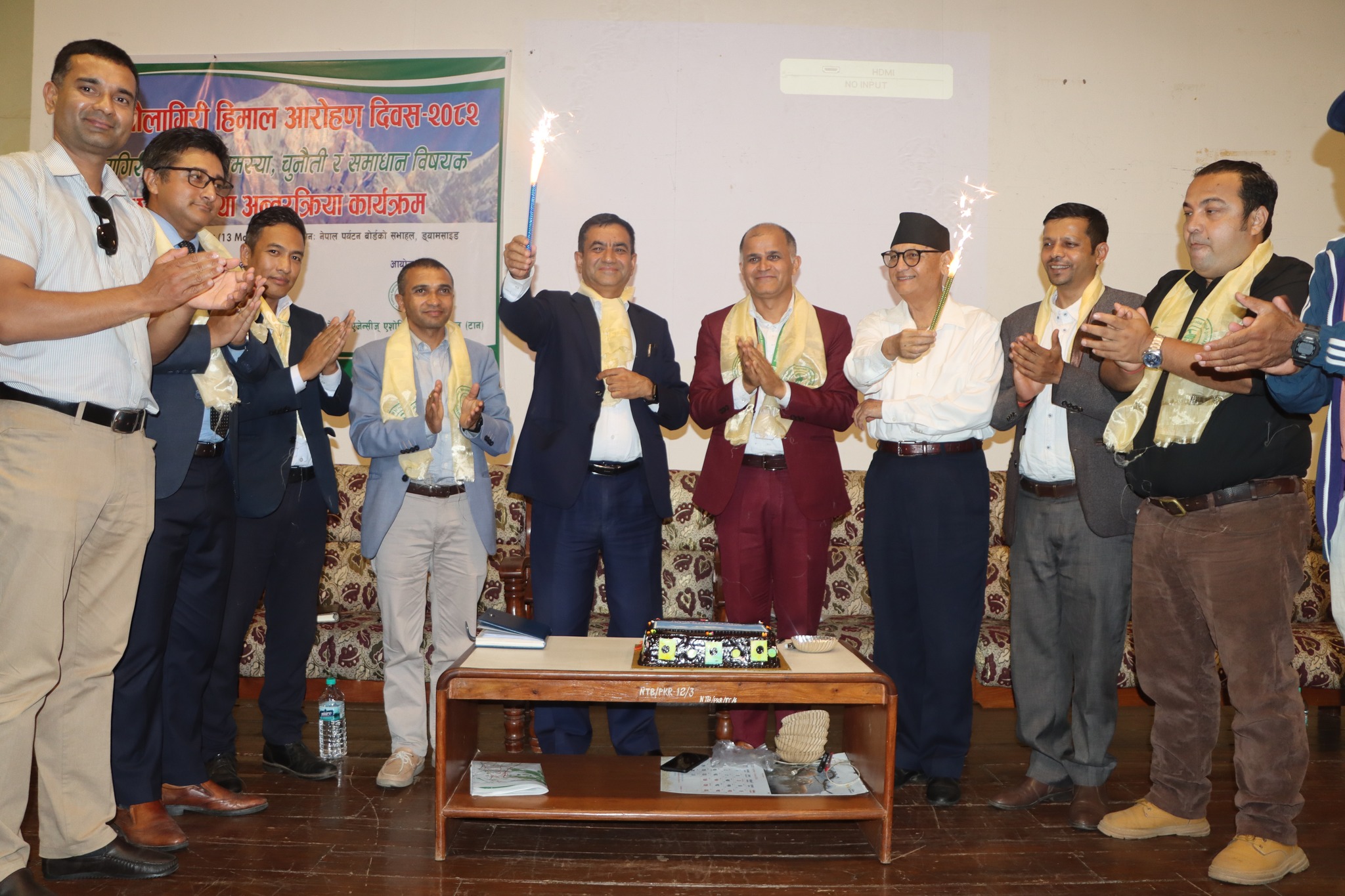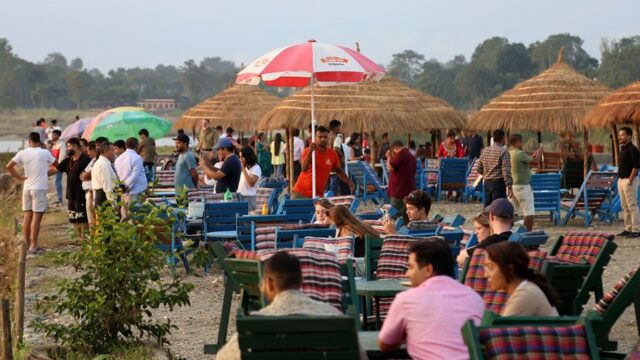The 65th anniversary of the first successful ascent of Mt. Dhaulagiri, the seventh highest mountain in the world at 8,167 meters, was marked with renewed calls for tourism development and conservation efforts in the region. On this day in 1960, a Swiss-Austrian expedition led by Max Eiselin, with the support of seven climbers including two Nepali Sherpas Nima Dorje Sherpa and Ngawang Dorje Sherpa reached the summit of this majestic Himalayan peak located in Myagdi district, Nepal.
Dhaulagiri: The Majestic White Mountain of Nepal
To commemorate this historic achievement, Trekking Agencies’ Association of Nepal (TAAN) Gandaki organized a special interaction program in Pokhara under the theme “Dhaulagiri Trekking: Problems, Challenges, and Solutions.” The event brought together tourism professionals, mountaineers, government officials, and stakeholders to discuss how to better utilize the Dhaulagiri region for sustainable tourism and economic growth.
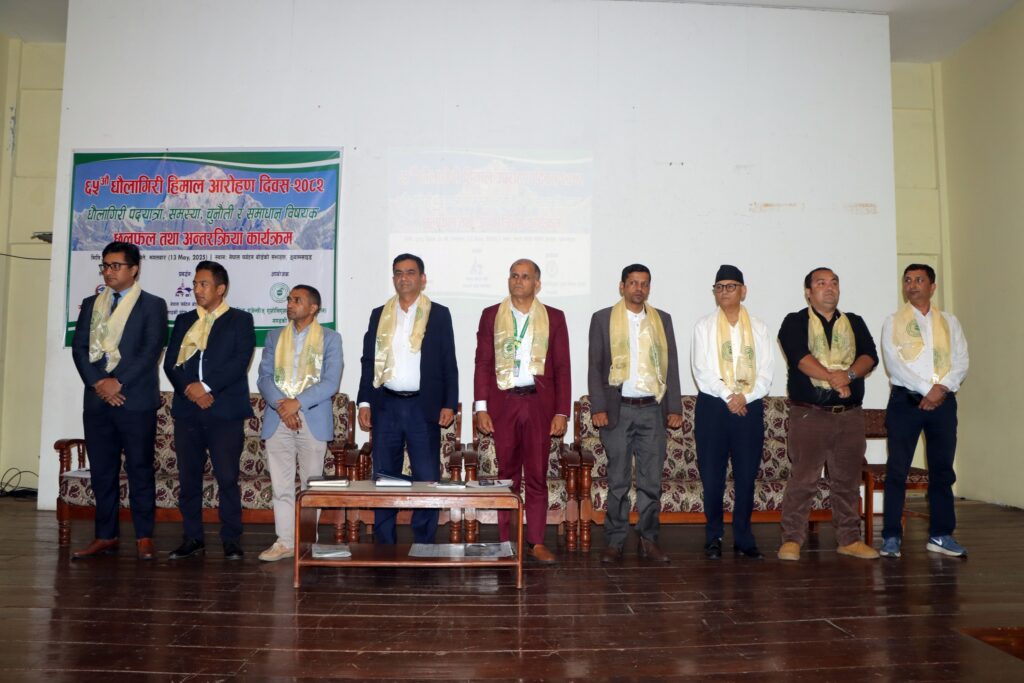
Renowned tourism expert Sameer Baral, who presented a paper during the event, emphasized that Dhaulagiri has the potential to be promoted as one of the most attractive destinations for both mountaineering and trekking tourism in the world. “If we invest in tourism infrastructure and strategic promotion, the Dhaulagiri region could significantly benefit the country’s economy and improve the livelihood of local communities,” Baral said. “While the Annapurna Circuit is declining in popularity due to road expansion, the Dhaulagiri Circuit could emerge as a strong alternative.”
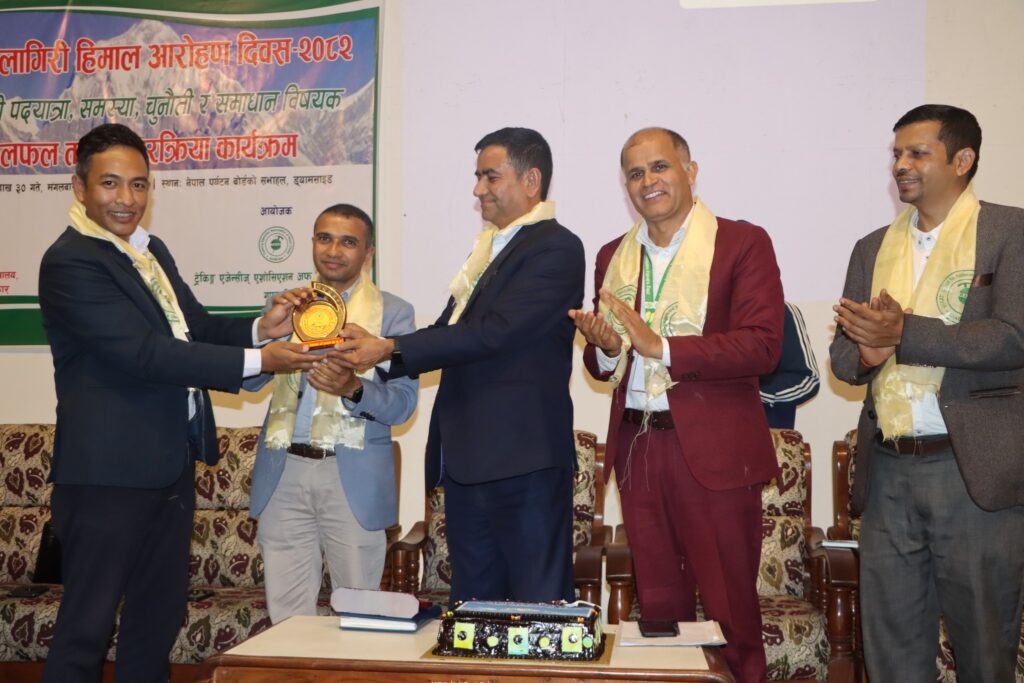
During the “65 Years of Dhaulagiri: A Historic Day in Nepal” celebration, notable climbers Dilli Prasad Acharya, who successfully conquered Thorong La, and Tashi Gurung, who summited Dhampus Peak, were also felicitated for their remarkable achievements in mountaineering, adding to the significance of the event.
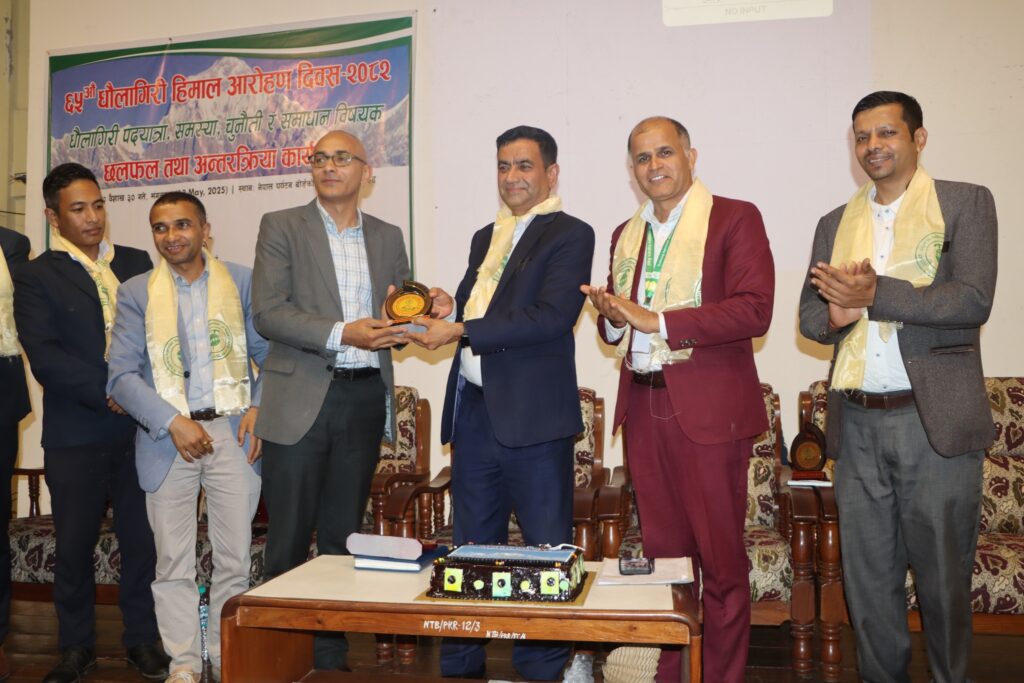
According to Baral, Dhaulagiri stands apart from other Himalayan peaks due to its unique topography, unpredictable weather, and more challenging ascent routes. “The mountain’s geographical structure and rapidly changing climate make each expedition an extraordinary experience,” he said, noting that this also adds to its appeal among adventure seekers worldwide.
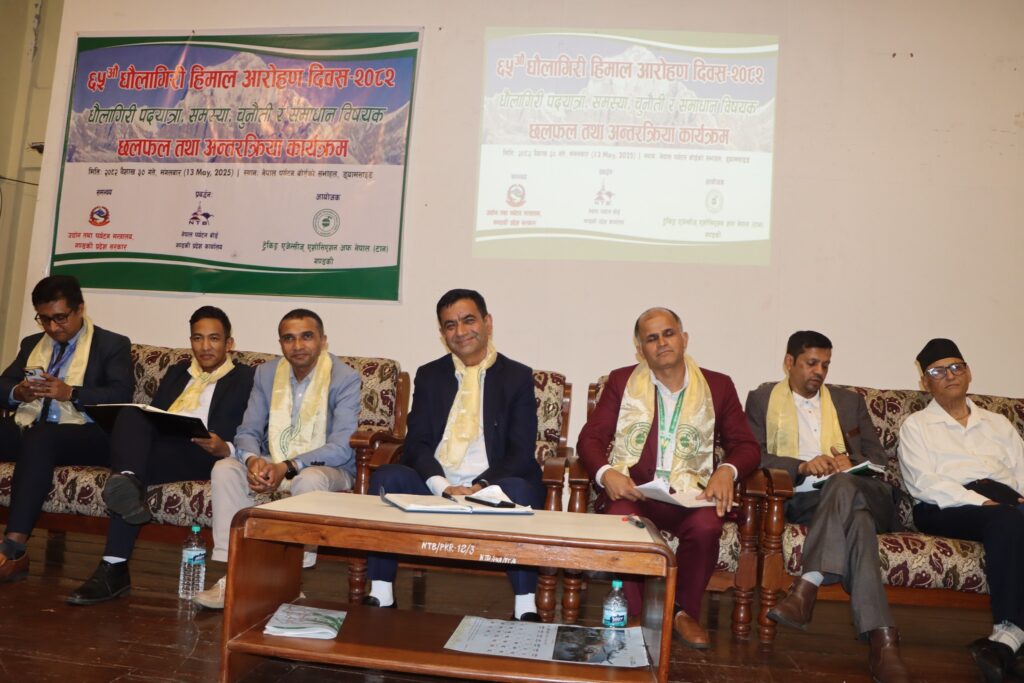
He stressed the importance of incorporating local culture and nature in the tourism development strategy of the region. “We need to preserve the cultural identity and biodiversity while promoting adventure tourism. This balance is crucial for sustainable growth,” Baral added.
Also speaking at the event, trekking entrepreneur Bishwo Hang Rai pointed out the lack of basic infrastructure along the Dhaulagiri Circuit Trail. “Trekkers often pass through remote areas without any human settlement. Therefore, there is an urgent need to construct shelters and resting facilities,” he stated.
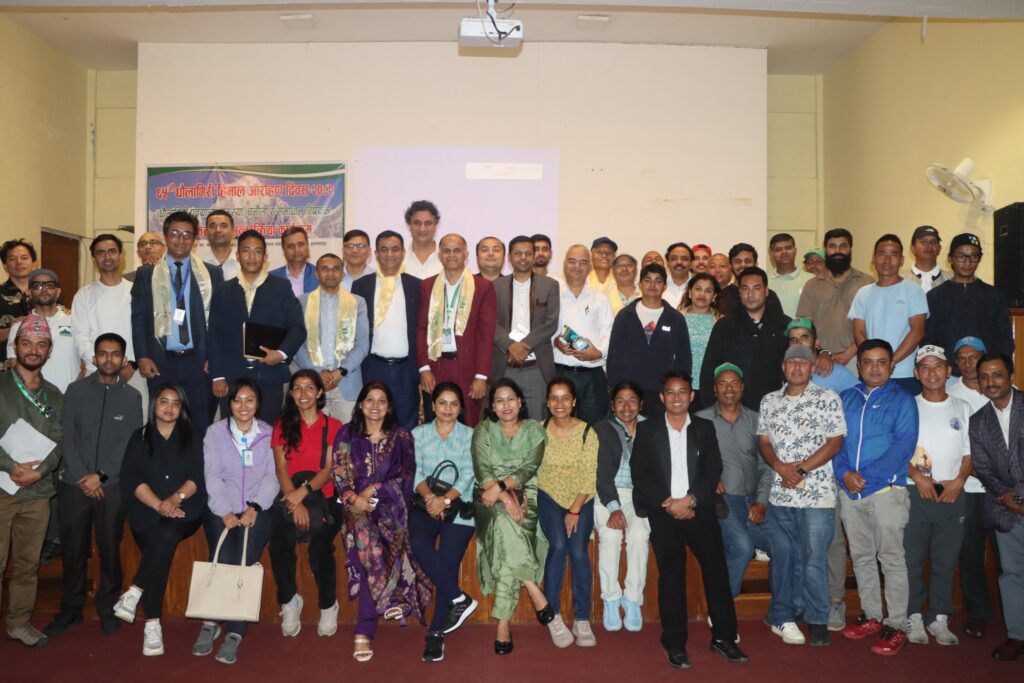
Bikash Gurung, President of the Mountaineering Association Gandaki, highlighted that although Gandaki Province is home to 133 peaks, including prominent ones like Annapurna and Manaslu, many of them still suffer from inadequate promotion. “If we succeed in attracting foreign climbers to these less-explored peaks, Gandaki Province could generate significant revenue and employment,” Gurung said.
Yubaraj Gurung, Senior Officer at the Nepal Tourism Board (NTB), echoed similar sentiments and called for coordinated efforts. “Collaboration among the government, private sector, and local communities is essential for long-term tourism development. NTB is committed to representing Nepal on the global stage and enhancing its image,” he said.

Indra Prasad Basyal, Secretary at the Ministry of Industry, Tourism, Forest, and Environment of Gandaki Province, stressed that the government has always given high priority to tourism. “Gandaki Province has tremendous potential for adventure tourism. We are ready to support initiatives that help promote the region in a sustainable way,” Basyal said.
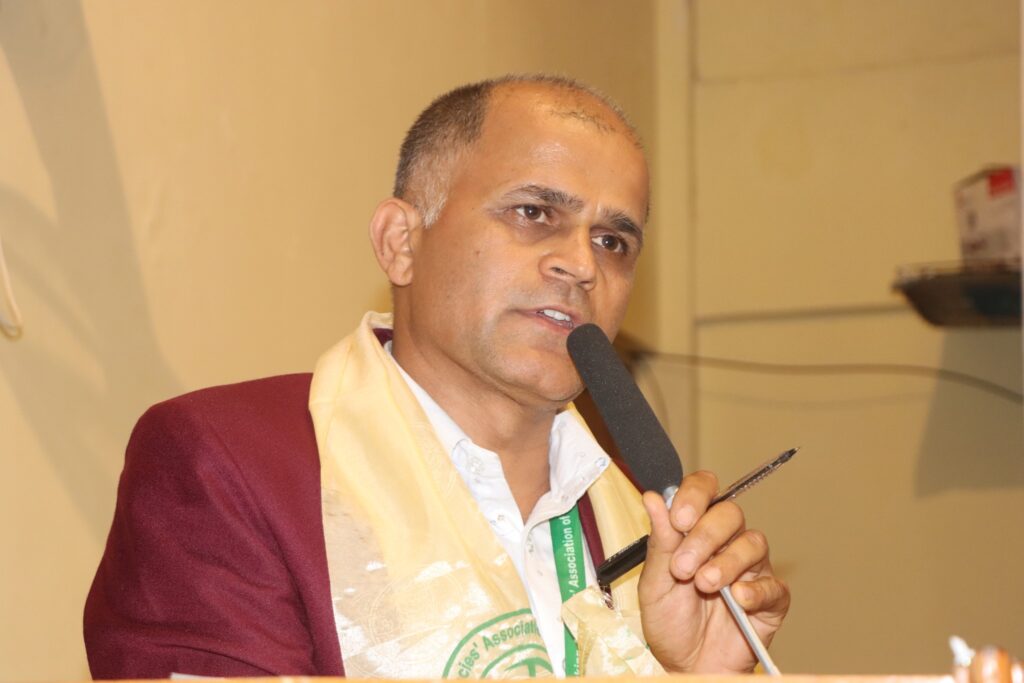
Krishna Prasad Acharya, President of TAAN Gandaki, stated that Dhaulagiri, along with other 8,000-meter peaks like Annapurna and Manaslu, holds an important place in promoting mountain tourism in the province. “Every year, we organize special programs on their respective summit anniversaries to highlight their tourism significance,” he explained.
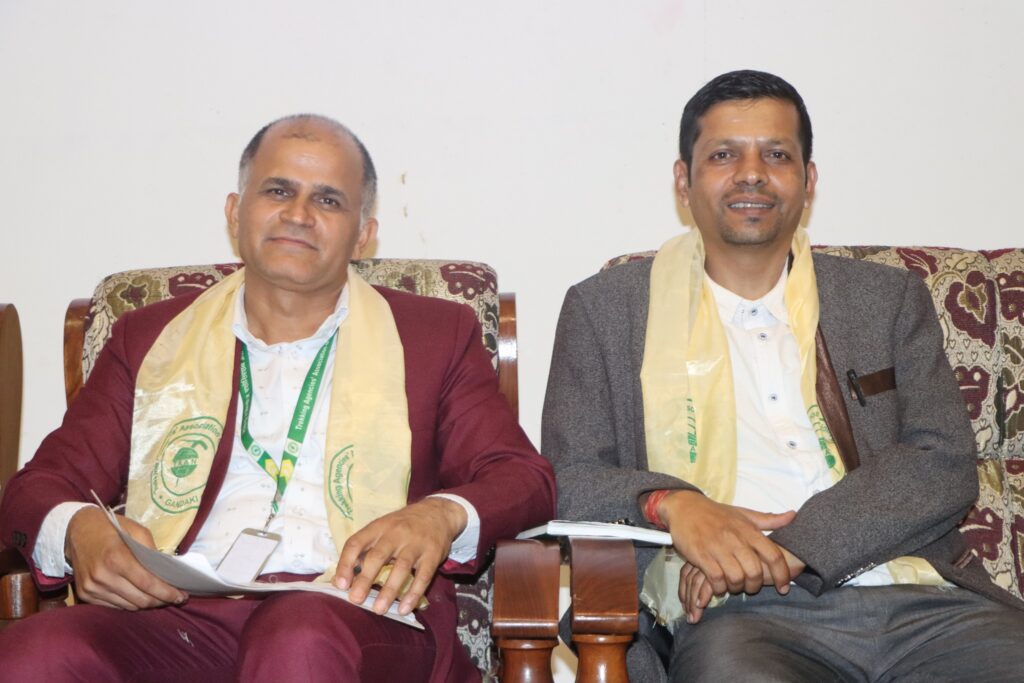
This year’s event was organized in coordination with the Gandaki Province Office of Nepal Tourism Board and the Ministry of Industry, Tourism, Forest, and Environment. It served as a reminder of Nepal’s mountaineering legacy and the untapped potential of Dhaulagiri and other Himalayan regions as tourism hubs.
As the world reflects on the historic achievement of scaling Mt. Dhaulagiri 65 years ago, Nepal’s tourism stakeholders are looking ahead with a shared vision one that honors the past while building a sustainable future for generations to come.
